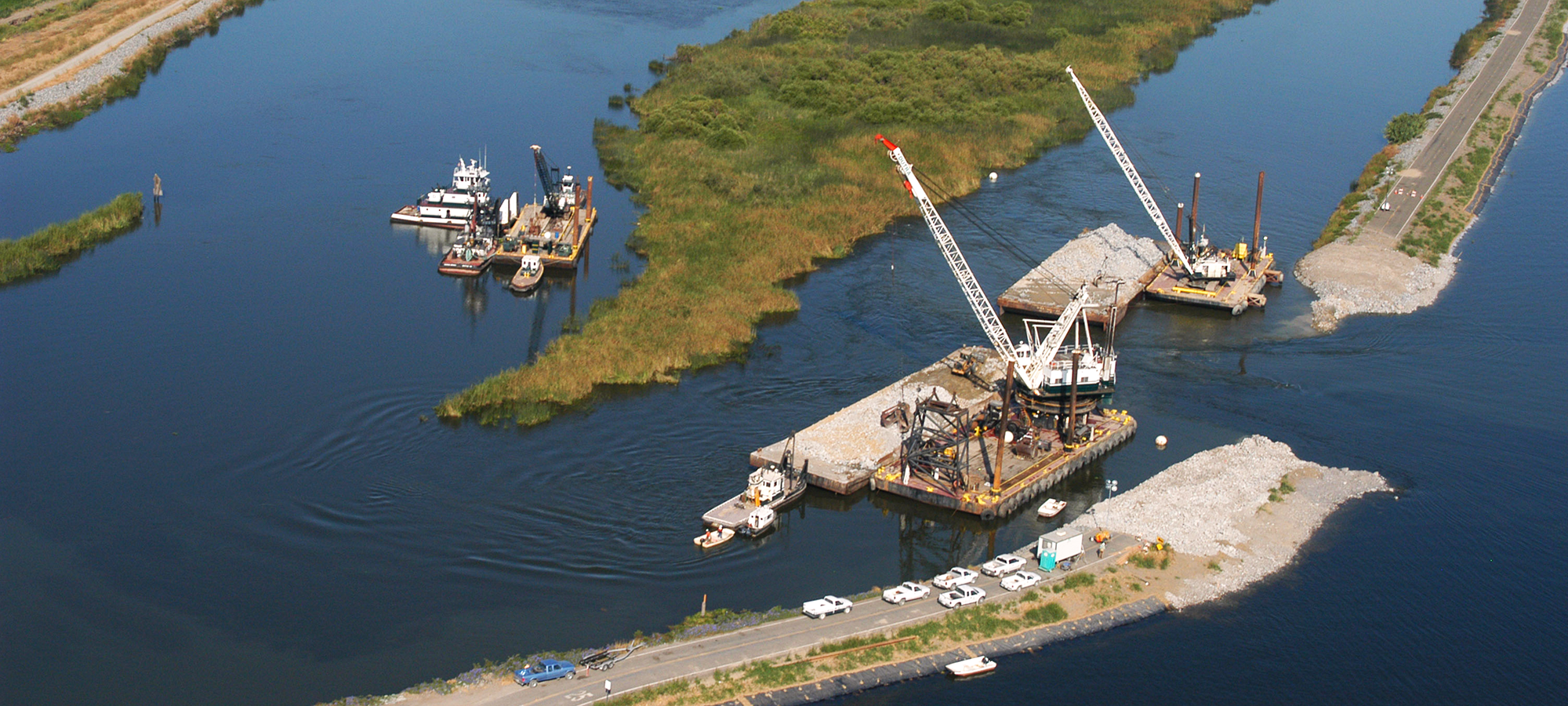We drive on them, live by them, and recreate around and in between them. A billion-dollar farming industry and millions of Californians rely on them. They protect lives, livelihoods, and delicate ecosystems. The more than 1,100 miles of levees in the Delta are such a vital part of living in Central California that it is easy for much of the population not to give them a second thought. That is… until something goes wrong.
The history of Delta levees is long and complex, starting with the Reclamation Era between 1850-1930. At the beginning of the Gold Rush, the wetlands of the Delta started to be transformed into productive cropland to feed the abrupt increase of people flocking to California. Through the 1850 “Arkansas Act,” the state began to give away 2 million acres of wetland to private owners if they reclaimed the land for crop production. Landowners utilized thousands of Chinese and other immigrants to build the Delta levee system. By the end of 1930, after several dry years, challenges of salinity intrusion arose, complicated by reclamation activities, mining debris, and diversions. After 1930, the era of water projects began.
Today, 110 reclamation districts oversee Delta levees, with one-third of the levees, or “project” levees, falling under the authority of the Army Corps of Engineers and the remaining inspected and assessed annually under state oversight.
Despite an extensive network of local landowner, state, and federal involvement, levee failures do happen. Erosion, boils, overtopping, cracks and fissures can occur over time or without notice – both in dry and wet seasons – leading to potentially catastrophic flood events. Anyone who sees a concern with a levee can report it to the local reclamation district.
Reclamation Districts Map
Tip: Click on the Identify Mode button near the top right of the Reclamation Districts Map webpage. Then, click on the corresponding area of the map where you live or work. A popup will show the name of your reclamation district. You can then search online for the contact information.

